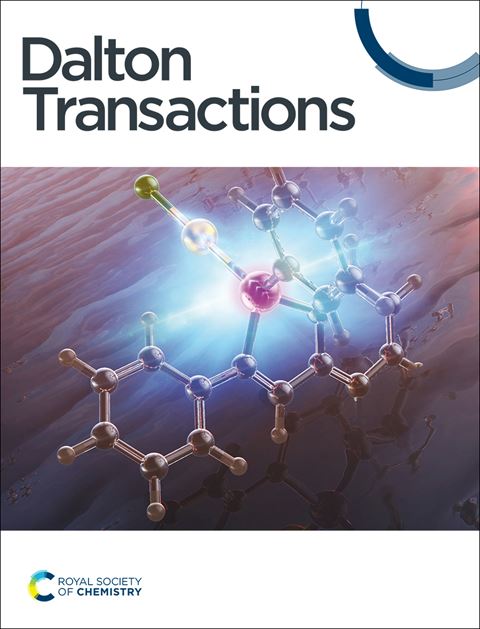Single-ion magnet behaviour in highly axial lanthanide mononitrides encapsulated in boron nitride nanotubes: a quantum chemical investigation
IF 3.5
3区 化学
Q2 CHEMISTRY, INORGANIC & NUCLEAR
引用次数: 0
Abstract
Lanthanide-based single-ion magnets (Ln-SIMs) have garnered significant interest for their potential application in designing molecular-level information storage devices. Among various strategies to enhance magnetization blocking barriers in SIMs, synthesizing highly axially symmetric compounds is the most promising approach. In the present work, using state-of-the-art computational tools, we have thoroughly examined the electronic structure, bonding, and magnetic anisotropy in lanthanide mononitrides [LnN](where Ln = Dy(III) and Tb(III)) and their encapsulation in zigzag boron nitride nanotubes (BNNT) of diameters (8,0) and (9,0) to design novel hybrid assemblies. Using periodic density functional theory calculations, we have thoroughly analyzed the structural and energetic perspective towards encapsulation of [LnN] molecules in parallel and perpendicular modes in BNNT(8,0) (8Ln∥ and 8Ln⊥) and BNNT(9,0) tubes (9Ln∥ and 9Ln⊥). Binding energy calculations suggest that the parallel arrangement of [LnN] is energetically more favorable (>30kJ/mol) than the perpendicular arrangement, with the BNNT(8,0) tube being energetically more preferred over the BNNT(9,0) tube. Non-covalent interaction plots clearly show dominant van der Waals stabilizing interaction in 8Dy∥ and 8Tb∥ compared to other assemblies. CASSCF calculations suggest that both the [DyN] and [TbN] show pure Ising type ground state with a giant barrier height of >1800 cm-1 and strictly no ground state quantum tunneling of magnetization. CASSCF calculations predict that the 8Dy∥ and 8Tb∥ assemblies show record high ab initio blockade barrier (Ucal) values of ~1707 and 1015 cm-1, respectively. Although 9Dy⊥ is an energetically unfavorable mode, this orientation benefits from the tube’s crystal field, which leads to a Ucal value of ~1939 cm-1, suggesting that encapsulation could further enhance the Ucal values. Contrarily, the [TbN] molecules show a dramatic increase in the tunnel splitting values upon encapsulation in BNNT tubes, leading to a drastic decrease in Ucal values. Our in-silico strategy offers insights into the magnetic anisotropy of simple [DyN] and [TbN] molecules and possible ways to integrate these molecules into BNNTs to generate hybrid magnetic material for information storage applications.氮化硼纳米管中封装的高轴向镧系单氮化物的单离子磁体行为:量子化学研究
本文章由计算机程序翻译,如有差异,请以英文原文为准。
求助全文
约1分钟内获得全文
求助全文
来源期刊

Dalton Transactions
化学-无机化学与核化学
CiteScore
6.60
自引率
7.50%
发文量
1832
审稿时长
1.5 months
期刊介绍:
Dalton Transactions is a journal for all areas of inorganic chemistry, which encompasses the organometallic, bioinorganic and materials chemistry of the elements, with applications including synthesis, catalysis, energy conversion/storage, electrical devices and medicine. Dalton Transactions welcomes high-quality, original submissions in all of these areas and more, where the advancement of knowledge in inorganic chemistry is significant.
 求助内容:
求助内容: 应助结果提醒方式:
应助结果提醒方式:


